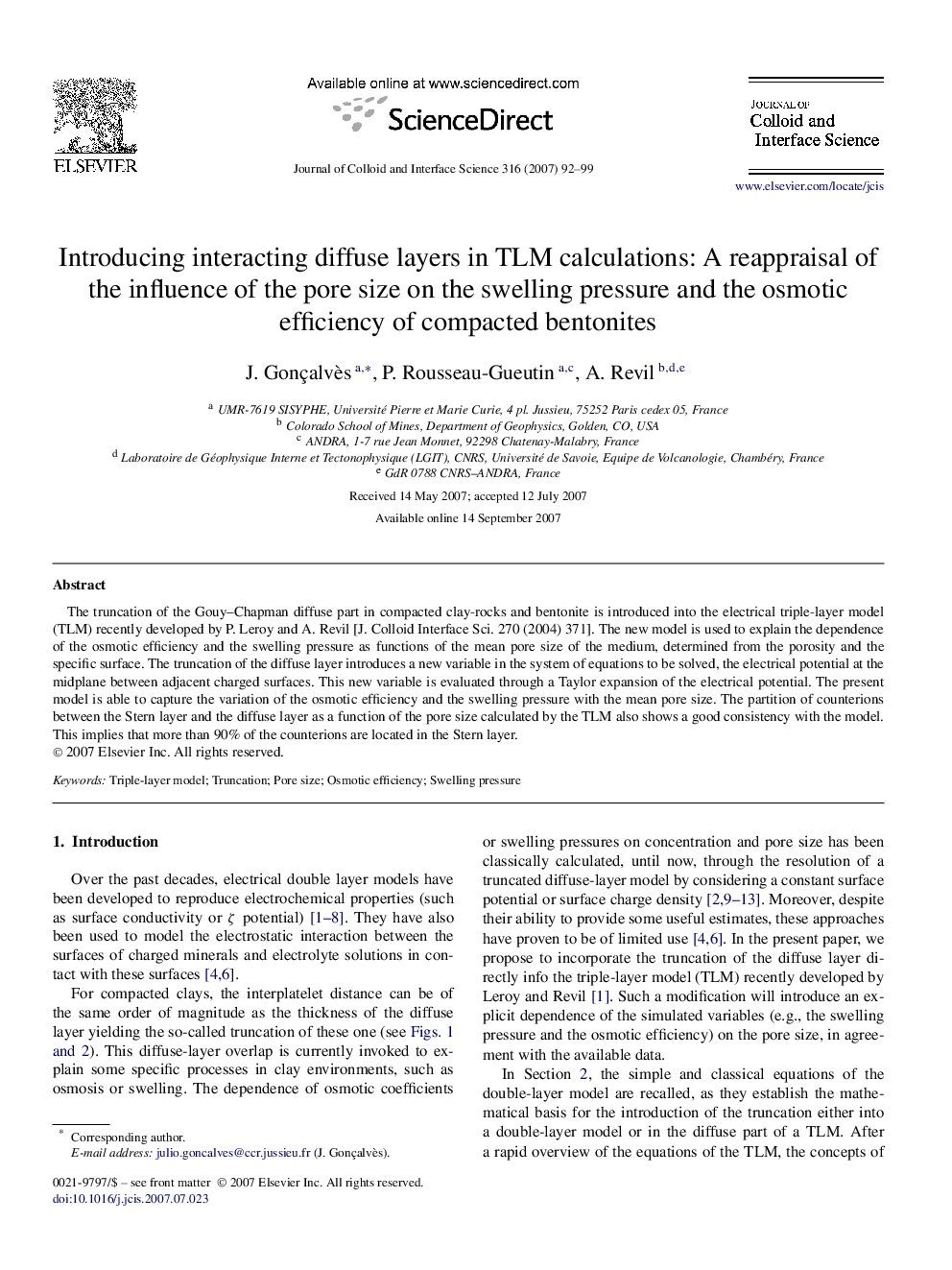| Article ID | Journal | Published Year | Pages | File Type |
|---|---|---|---|---|
| 611670 | Journal of Colloid and Interface Science | 2007 | 8 Pages |
The truncation of the Gouy–Chapman diffuse part in compacted clay-rocks and bentonite is introduced into the electrical triple-layer model (TLM) recently developed by P. Leroy and A. Revil [J. Colloid Interface Sci. 270 (2004) 371]. The new model is used to explain the dependence of the osmotic efficiency and the swelling pressure as functions of the mean pore size of the medium, determined from the porosity and the specific surface. The truncation of the diffuse layer introduces a new variable in the system of equations to be solved, the electrical potential at the midplane between adjacent charged surfaces. This new variable is evaluated through a Taylor expansion of the electrical potential. The present model is able to capture the variation of the osmotic efficiency and the swelling pressure with the mean pore size. The partition of counterions between the Stern layer and the diffuse layer as a function of the pore size calculated by the TLM also shows a good consistency with the model. This implies that more than 90% of the counterions are located in the Stern layer.
Graphical abstractSketch of the electrical triple-layer model at clay surface with two alternative cases: the infinitely developed diffuse layer and the truncated diffuse layer accounted for in the present paper.Figure optionsDownload full-size imageDownload as PowerPoint slide
